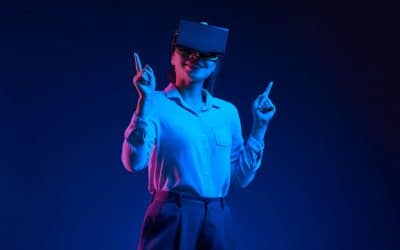Metaverse is an avatar-guided virtual reality. Indeed, provided by metaverse, the avatar, guided by a person in real life, can shop, work, play and – most importantly – learn in a virtual world. These virtual spaces are either immersive virtual realities or three-dimensional worlds. In education, metaverse means active participation in the learning progress. In other words, metaverse might become the revolutionary turning point in education. Besides, we all know that we’re most likely to remember something we’ve learnt by doing.
The current use: the gaming industry
Today, the metaverse is widespread, mainly in the gaming industry. However, there are still some companies using metaverse in their workforce. It is also used by students of medicine and in military training. In any case, it is supposed that meta will be used by other spheres as well. Besides, its use in the medical field is growing, and it does not take a lot until it arrives at education.
What is essential is the exponential growth of several important factors contributing to the metaverse technology. The latter include NFTs, cryptocurrency, blockchain and reality simulation software. Some examples in the gaming sphere, such as Fortnite, now includes events and even music concerts in its games. Or Minecraft, that is, of course, all about building.
What is interesting is that digital ownership is something people spend their money on. People buy accessories for and characterize the features of their avatars by paying for them in bitcoin. Moreover, in this virtual reality, people also purchase digital assets such as real estate, music and much more. People have arrived at the point of buying actual moments or experiences such as NBA hotshots.
Using metaverse in education
Of course, it has to be remembered that it copies the old one when a new practice enters a medium. So, as for the movie industry, when the first films were released, they used to copy the old ones until the directors began editing movies. Now, everyone was creating web pages until people discovered that the web could be dynamic, and the so-called web 2.0 entered the game.
For instance, the pandemics almost forced teachers and educators to use Zoom or other platforms, enabling them to video chat with their students online. Even if some institutions might have encountered difficulties, the lessons in online streaming will unavoidably be the future of education. The covid 19 pandemics did nothing more but accelerate this progress that would’ve still happened. Anyhow, the positive side wants it that being forced to deliver lessons online accelerated the progress of the shift of education from the physical classrooms to the virtual ones.
What Zoom and other similar platforms are by now missing is the possibility to interact outside of a mere videocall. That said, we’re lucky to move towards a more specific and undoubtedly immersive learning experience: the use of metaverse in education. Its immersive virtual reality technology can catapult it in any time, situation, and space. Imagine being projected, with your avatar, in more than a two-thousand-year-old scenario in ancient Greece. You could just easily walk around among the most famous monuments in the city polis, see how they’re being built (extremely useful for architecture students) or listen to a speech by Plato. Imagine looking at the planets and zooming it all in by discovering the rings of Saturn. Or, what is more, imagine assisting a virtual assemblage of a car engine or even assisting with heart surgery.
About the immersive virtual learning experience
Back to the behaviour of the medium. These all follow standard practices and models that are conventional. Besides, education has not always favoured virtual spaces and the education institutions’’ crisis during the covid 19 was but proof of this fact. And since video calling platforms have some significant lack, as already mentioned, the first immersive virtual learning spaces will portably try to make up for all that. Indeed, they will most probably be based on on-campus activities and class lectures, including practical three-dimensional exercises.
Learning is achieved the best by doing, and technology constantly changes and improves; there is but one thing left. That is the adaptation of staff and students to this new method of teaching and learning. Of course, it is individual, but the team should be trained and prepared to deliver metaverse lessons. While as, the new generations might have already been introduced to metaverse by gaming. Anyhow, it would be appropriate for the students to receive proper training as well.
ACS ASOMI College of Sciences is constantly updated on metaverse and its adaptation in higher education. ACS is already delivering online or blended lessons by using the latest and the most avant-garde technological and digital tools and means. Still, it will improve the delivery of online and metaverse education as well.




